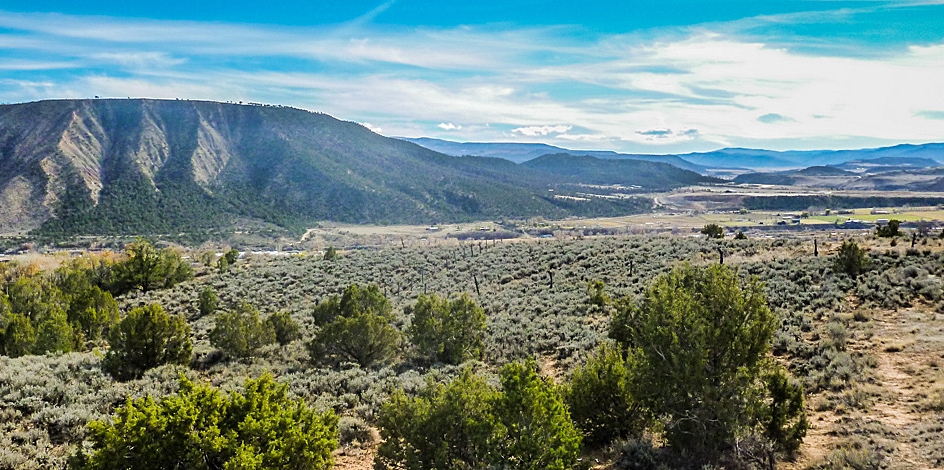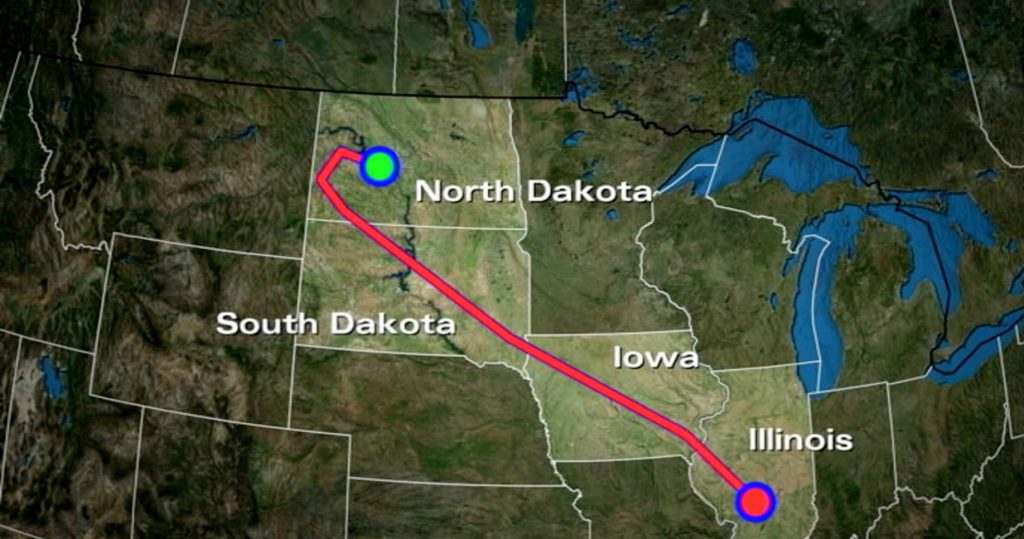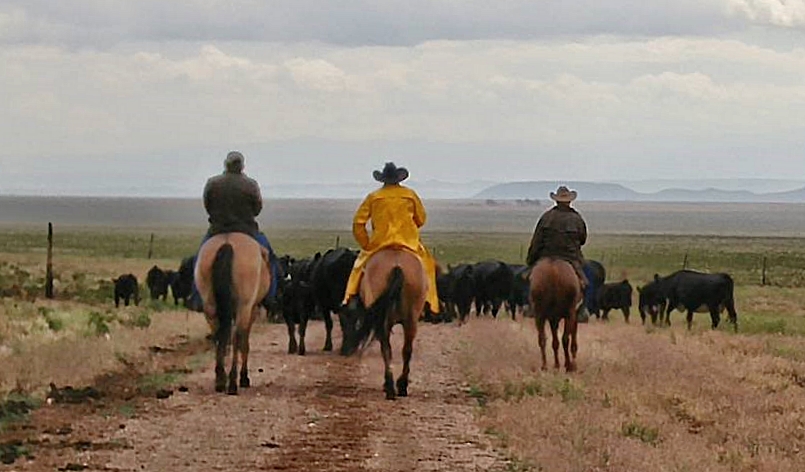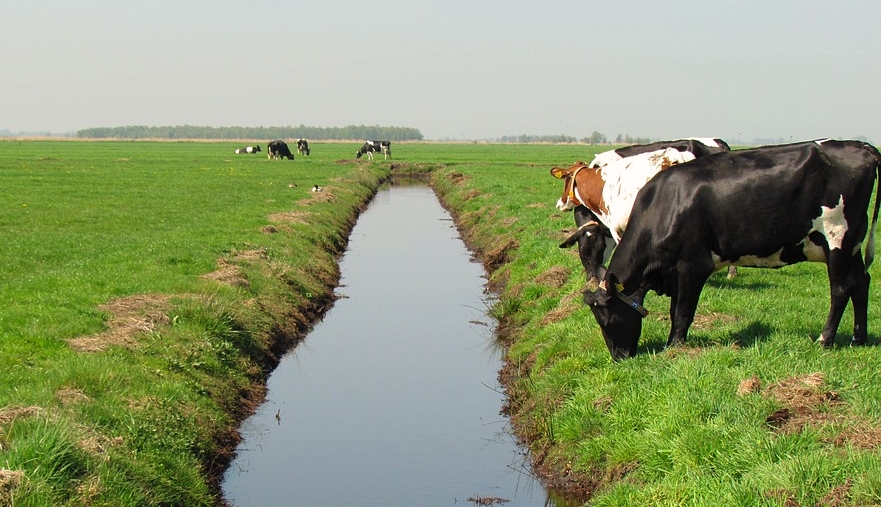In June 2016, the U.S. Geological Survey discovered that Colorado has 40 times more technically recoverable natural gas resources than previously estimated, located in the Piceance Basin. Yet these vast resources are not reflected in recent federal land management plans for the region that could be in effect for over a decade. The federal government owns over 640 million acres and 700 million acres in mineral rights below the surface. As just a small piece of the federal estate, the Mancos Shale discovery in the Piceance Basin represents tremendous economic potential, but also demonstrates the inadequacies of federal land ownership and policies. Local land-use issues, and undoubtedly highly contentious ones, should not need to wait for the U.S. Congress or a federal agency to weigh multiple land-use choices. A Washington-centric approach to management stifles creative, collaborative solutions to competing interests that could be resolved at local, state, or regional levels without the added baggage of national political battles and federal regulatory processes. While states and local communities may not always make perfect decisions, the best environmental policies are site and situation specific and emanate from liberty.
Colorado’s Discovery of Massive Oil and Gas Reserves: A Case for Local Energy and Environment Policy
The U.S. Geological Survey (USGS) discovered this past June that Colorado has 40 times more technically recoverable natural gas resources than previously estimated. The discovery makes Colorado’s Mancos Shale in the Piceance Basin the second-largest known shale reserve in the country (after Pennsylvania), assessed by the USGS with over 66 trillion cubic feet of gas, 74 million barrels of shale oil, and 45 million barrels of natural gas liquids.[1] Prior to this most recent discovery, the USGS estimated that the area held only 1.6 trillion cubic feet of technically recoverable natural gas and provided no estimates for oil.[2] Yet these vast resources are not reflected in recent federal land-management plans for the region, which could be in effect for over a decade.

A U.S. Forest Service resource management plan published in December 2015, and an accompanying environmental impact statement from the Bureau of Land Management in August 2016, do not account for the recently discovered resources. Instead, the agencies tightly restricted access for both future and existing leases to the oil and gas industry, reflecting the Obama Administration’s “keep it in the ground” approach. Just as important, these federal plans take decisions for competing land uses out of the hands of the individuals most affected by them. Federal managers, competent or otherwise, do not have the same incentives to manage local lands effectively, nor do they have the flexibility to pursue creative solutions.
The new estimates in Colorado and the associated federal management plans serve as a call for Congress to empower states and private individuals to manage energy and environmental decisions on many federal lands, not just those in Colorado but across the federal estate. Ultimately, Congress and the next Administration should identify federal lands to be transitioned to state and local control and sold to private individuals. In the meantime, Congress should open access to resource management on lands that are not part of the national park system, or congressionally designated areas, and allow states to review and permit activities on federal lands within their respective state, whether it is natural resource development, recreation, or grazing. Devolved responsibility would allow more efficient and accountable management and would free federal resources for more pressing issues.
Federal Control Restricts Oil and Gas Resource Development
Though the economic potential for Colorado’s natural resources is great, federal bureaucracy stifles development by drastically curtailing where and how companies can access oil and gas resources in the Colorado Mancos Shale region. Much of the Mancos Shale falls under lands managed by the Forest Service (under the Department of Agriculture), which collaborates with the Bureau of Land Management (BLM, under the Department of the Interior) to manage oil and gas resources. The Forest Service defines the lands available and the conditions for oil and gas development (among other uses) in management plans. The BLM then conducts and administers leases. Such plans generally govern resource management between 15 years and 20 years.
In December 2015, the Forest Service finalized its resource management plan for new leases in the White River National Forest, one of several in the Mancos Shale region. The plan significantly restricts the land that is available for resource development. Of the 2.3 million acres, the Forest Service makes only 194,100 acres accessible for oil and gas extraction.[3] This is half the acreage that was available under the last plan finalized in 1993, and just over 8 percent of the total available acreage. Based on this plan, the BLM published a final environmental impact statement in August 2016, proposing to cancel 25 of the 65 already existing leases on that land; the remaining leases would be modified to meet the Forest Service’s requirements for new leases.[4]
In the Forest Service’s final oil and gas plan in December, Forest Manager Scott Fitzwilliams wrote, “If new information or technological advances show the need to revisit this decision, I have the authority to do so. But at this time, I have decided to take a more conservation-minded approach to future gas leasing on the White River National Forest.”[5] Since then, the USGS announced its discovery of 40 times more technically recoverable natural gas than previously estimated. Taking that second look is exactly what some Members in Congress are asking the BLM to do for existing leases there.[6] The same should be done elsewhere. There are 69 trillion cubic feet of proved natural gas resources on federal (onshore) lands, and there are 5.3 billion barrels of proved oil resources on federal (onshore) lands.[7] Yet the Obama Administration has directly (as in the case of the White River National Forest) and indirectly (via lease auctions, moratoriums, and permit delays) restricted access to these resources.[8]
Multi-Use and Federal Micromanagement of Local Choices
Because land owned by the federal government is abundant and diverse, grazers, farmers, tourists, hunters, and other individuals and groups have an interest in how the federal agencies manage the White River National Forest and other federal lands like it. For that reason, Congress passed multiple land-use laws to guide federal agencies. The Multiple Use and Sustained Yield Act, the National Forest Management Act for the Forest Service, and the Federal Land Policy and Management Act (FLPMA) for BLM are some of the principal guides for agencies on multiple land use. In practice, however, political agendas and bureaucratic priorities often cast interested parties to the side, limiting (in some instances prohibiting) certain economic activity, such as energy development.
For example, the parameters established in the FLPMA of multi-use, sustained yield, and environmental protection guide the BLM’s approach to land management.[9] Though these parameters may sound accommodating to all interested parties, each entails value choices which communities might prioritize and define differently than the federal government. The federal government is not in a good position, nor should it be the role of the federal government, to discern how these parameters ought to be applied on the ground and in a variety of communities, such as those in Colorado.
Colorado is just one of many examples of the federal government’s ill-fitting management. The Forest Service’s White River resource management plan is a static approach to an otherwise dynamic environment and industry, as the USGS discovery months later showed. It offers a misguided notion of environmental stewardship, presuming that no management is good management and “keeping it in the ground” is the best way to protect the environment. Rather than accommodating multiple uses, the primary vision guiding the decision—what Fitzwilliams and the Forest Service called “environmentally preferable”—was one allowing “no new leasing.”[10]Management alternatives seem to have been measured according to how closely they aligned with this standard of “no use” rather than a standard of multi-use.
Hardly an isolated problem, this particular debate over multi-land use in this area of Colorado has been brewing at least since 2010 when the Forest Service first began publicly reviewing the White Forest management plan.[11] A particularly controversial area is the Thompson Divide, where other interest groups have protested against further oil and gas leasing, though wells have been operating there since 1947.[12] The executive director of the Thompson Divide Coalition, Zane Kessler, says that “this is about local control and a community’s desire to determine its own future” rather than outright opposition to the oil and gas industry.[13] But federal management of the land neither meaningfully fosters local and state control nor encourages more creative solutions at the local level between apparently competing uses for the land. Instead, Senator Michael Bennet (D–CO) has taken up the issue by introducing the Thompson Divide Withdrawal and Protection Act to prohibit oil and gas resource development.
Similar debates have surfaced in other issues, such as the Department of the Interior’s regulatory scheme for greater-sage-grouse habitat. In this instance, the Department of the Interior did not seek meaningful or timely participation from local commissioners in nearby Garfield County, despite the extensive local efforts to restore habitat and grouse populations while also accommodating multi-use purposes.[14] It appears that national environmental groups that agreed with the Interior’s approach did receive greater access to federal decision makers, however.
These examples illustrate the larger systemic problem of federal land management and its multi-use land strategy. Local land-use issues, and undoubtedly highly contentious ones, should not need to wait for the U.S. Congress or a federal agency to weigh multiple land-use choices. Federalizing land management instantly politicizes decisions on a national level. Colorado has nine Representatives and Senators, and yet 526 other Congressmen and the Department of the Interior have a say in how federal land is used there. Unsurprisingly, larger political battles muddy local issues and concerns. Too often, Congress forces decisions through “must pass” legislation, such as omnibus spending bills, rather than considering land issues on their own merits.[15] In other instances, a President can unilaterally designate land as a national monument without say from Members or states, adding additional land-use restrictions in the process.[16]
This Washington-centric approach to management stifles creative, collaborative solutions to competing interests that could be resolved at local, state, or regional levels without the added baggage of national political battles and federal regulatory processes. While states and local communities may not always make perfect decisions, the best environmental policies are sight and situation specific and emanate from liberty.[17]
What Congress and the Next Administration Should Do
The federal government owns a significant portion of America’s land, primarily in the West. Over 640 million acres (nearly 30 percent of the entire country) is under federal control. It owns another 700 million acres in mineral rights below the surface. As just a small piece of the federal estate, the Mancos Shale discovery in the Piceance Basin represents tremendous economic potential but also demonstrates the inadequacies of federal land ownership and policies. Short of devolving federal ownership of many federal lands to states and local governments and selling land to individuals, the private sector, and nonprofits, Congress should:
- Delegate authority to states for environmental review and permitting of energy projects on federal lands within their borders. The sheer size and diversity of the federal estate and the resources above and below ground are too much for distant federal bureaucracies and an overextended federal budget to manage effectively. Allowing states to regulate the energy resources on federal lands means more efficient and accountable management, and frees federal resources for more pressing issues. States share the cost of maintaining federal lands and already have the regulatory structures to manage federal lands within their boundaries.[18]
- Open markets to natural gas exports and relieve redundant regulatory burdens. Though there are vast natural gas resources like the ones discovered in Colorado, American energy businesses do not have easy access to international markets. The Department of Energy has delayed decisions on export licenses, preventing America from realizing its energy-export potential. Opening new international markets to liquefied natural gas (LNG) exports would be a boon to American companies and the U.S. economy. Exports also have important geopolitical benefits by diversifying supply and reducing other nations’ ability to manipulate natural gas markets for political purposes.LNG exports are further needlessly complicated by the redundant role of the Federal Energy Regulatory Commission (FERC) for environmental review and permit of export terminals. States already have the authority to permit and veto LNG terminals. Rather than play an advisory role to FERC, a state’s environmental review and permit approval should satisfy the federal permits and all other necessary approvals required under the National Environmental Policy Act to build an LNG terminal. Export applicants would still need to meet Coast Guard security standards and the requirements under the Maritime Transportation Security Act, as well as the Department of Transportation’s Office of Pipeline Safety requirements.[19]
Likewise, in order to improve management of federal lands, as well as enable a transition of ownership of many federal lands to private individuals and states and local governments, the next presidential Administration should:
- Downsize the federal estate. The Department of the Interior and Forest Service should immediately begin to sell lands they have already designated as unwanted in land-use plans to state and local governments, the private sector, and nonprofits. Increased state and private ownership of lands will maximize the land’s value and result in better environmental stewardship, while reducing the responsibilities of an overextended federal government. Local land ownership will also best meet the concerns and needs of the citizens near federal lands.
- Defend state authority to regulate fracking. In March 2015, the BLM issued rules regulating the fracking process on federal lands, for which Congress has given the BLM no authority and which are redundant to the permitting process of state and tribal governments.[20] States have effectively regulated fracking operations on private, state, and federal lands for decades and possess greater site-specific knowledge. The Secretary of the Interior should publish a notice-and-comment period to revoke the BLM’s fracking rules.
- Increase access to all natural resources exploration on federal lands. The Department of the Interior and Forest Service should increase access to natural resources on federal lands, adopting a management approach exemplified in the Eight Principles of the American Conservation Ethic.[21] Each should review and update all land-management plans under this framework and should expedite the unnecessarily arduous permitting processes required for a company to access energy and natural resources. Finally, where the Interior Department and the Forest Service have discretion, they should adjust prices to fair-market value for access and use of federal lands.[22]
Better Management Will Produce Energy and Protect the Environment
Americans can—and do—successfully pursue both energy needs and environmental stewardship through the power of free markets and free individuals.[23] Undoubtedly, private companies and state and local governments could accomplish this in the Mancos Shale region. Good environmental and land-use policy recognizes that decisions should be made closest to the people who have the most to gain or lose by those decisions.
—Nicolas D. Loris is Herbert and Joyce Morgan Fellow in Energy and Environmental Policy, andKatie Tubb is a Policy Analyst, in the Thomas A. Roe Institute for Economic Policy Studies, of the Institute for Economic Freedom and Opportunity, at The Heritage Foundation.
 *Free Range Report*
*Free Range Report*



